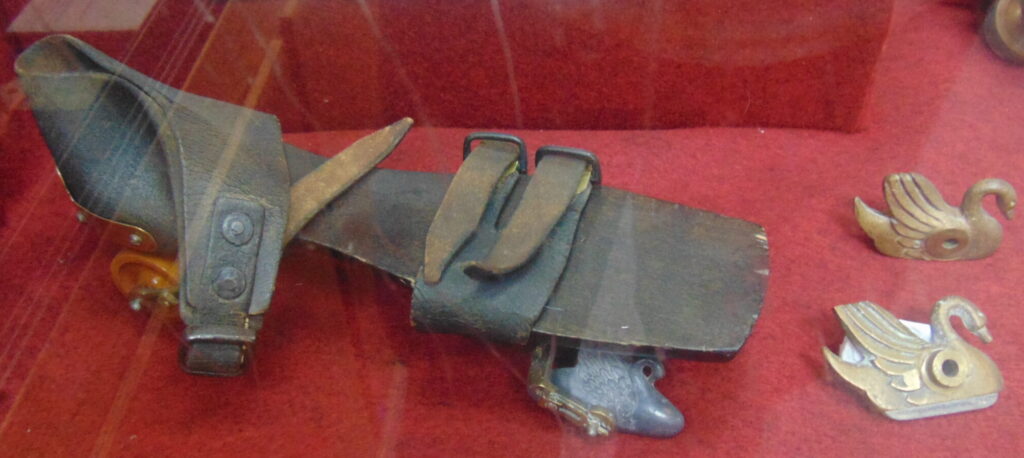I saw this skate in a cabinet at the National Museum of Roller Skating:

The tag on it says:
The improved James L. Plimpton parlor skate introduced in 1866 combines rollers and an ice blade. The silver brass swans attached at the front show what the skate would need to become an ice skate and the wheels in the rear demonstrate the roller skate idea. Plimpton suggested four edges as opposed to the traditional one blade (swan) so that the skate would be turned or reversed as the edges become dull.
Gift of Budd Van Roekel
Van Roekel Patent Model Collection 84.40.3
National Museum of Roller Skating
The patent (US55901), which I found via Google Patents, supports this claim, saying:
The runners…have smooth running surfaces, with angular edges, so that they may be reversed when the inner edges lose their angularity by wear, and a fresh, sharp edge obtained; and when both edges of one surface become worn the runner may be inverted and two more angular or sharp edges obtained. Thus, each runner has four angular edges, which may be successively used before the runner will require to be sharpened.
US patent 55901
Plimpton made the runner-holders swan-shaped. In the patent, he notes that they “may be of any ornamental design.” His choice of a swan echoes the swan ice skates that were popular around the same time. E.J. Brakmaan wrote a little pamphlet about them [in Dutch].
In the patent, Plimpton claims that these skates give the skater
perfect command over the skates, and is enabled to perform curves, gyrations, and evolutions with the greatest facility.
US patent 55901
The skates may have worked well wheels attached—Plimpton’s basic design is still used with quad roller skates today— but I have serious doubts about how well the double-runner/truck system worked on ice.

